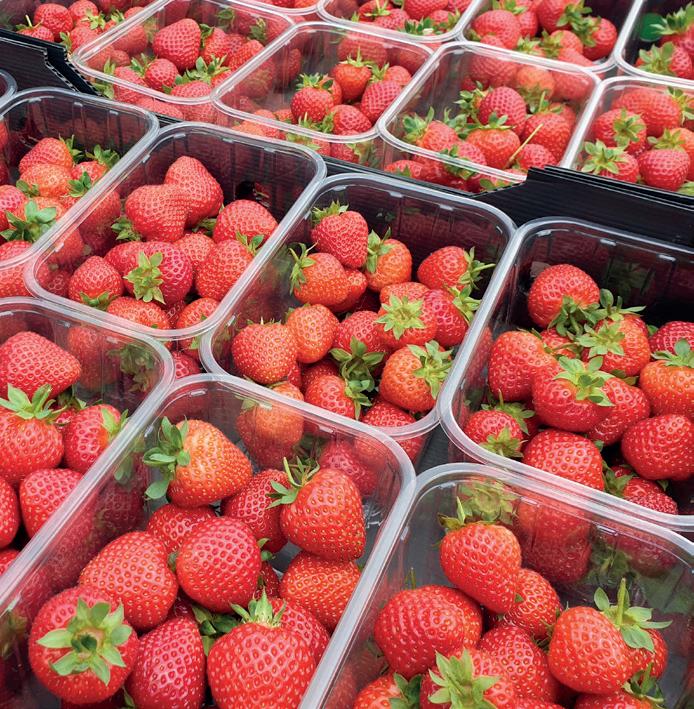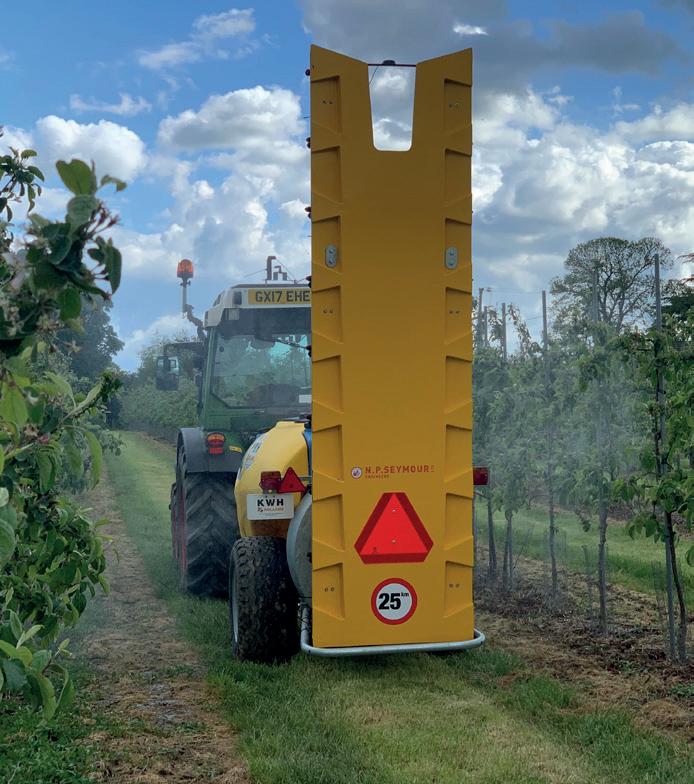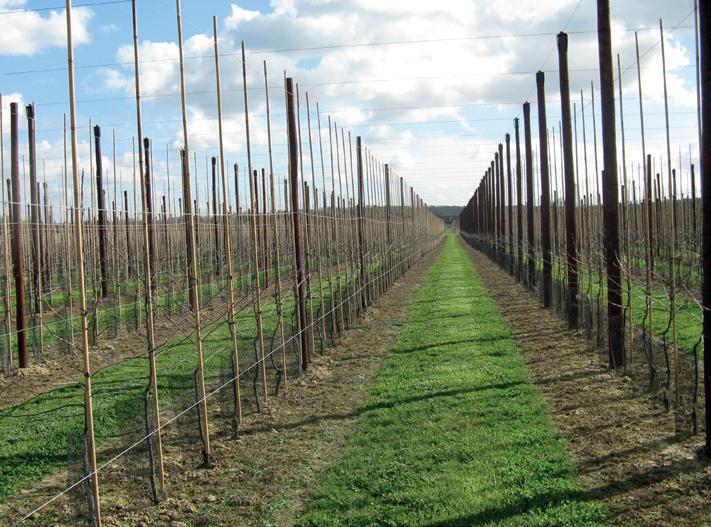
2 minute read
Novel approaches to apple canker control using endophytes
Title: Systemic infection and symptom expression of Neonectria ditissima in relation to endophytes conditioned by environmental stresses
Funder: AHDB (TF 226), Avalon Fresh, Adrian Scripps Ltd, Biotechnology and Biological Sciences Research Council, Frank P Matthews, WORLDWIDE Fruit Ltd
Advertisement
Term: October 2017 to March 2022
Novel approaches are urgently needed to control Neonectria ditissima, the cause of apple canker. Endophytes could be exploited to manage the disease, reducing the level of infection and subsequent symptom development. Endophytes are microbes that live within a plant for at least part of their lives, without causing apparent disease. Some endophytes can help plants to tolerate biotic stress (e.g. caused by plant pathogens) and abiotic stress (e.g. caused by drought or high temperatures). NIAB has previously found that antagonistic fungal endophytes (Figure 1) from the genus Epicoccum (particularly Epicoccum purpurascens) are much more abundant in apple varieties that are relatively canker tolerant.
The project
The objective of this project has been to understand more about this relationship and learn exactly which species of endophytes might be exploited for controlling apple canker. We have been trying to find out if the tree’s recruitment of these endophytes is genetically controlled by apple hosts and if it is influenced by site-specific characteristics and apple varieties. We have been studying whether canker symptom expression is related to planting times, or the abundance of specific endophytes across several orchards. We have also investigated the extent to which endophyte profiles of a specific apple genotype can be influenced by management practices, such as irrigation and soil amendments.
Results
When examining the abundance of endophytes on leaf scars, the main entry point of the pathogen, several fungal and bacterial groups differed in their relative abundance between canker resistant and susceptible varieties, but interestingly, the bacterial endophytes were more consistent over two seasons, suggesting that beneficial bacterial strains (biocontrol and/or general plant growth promoting) may be more effective than fungal ones.

Co-inoculating both the fungal endophyte biocontrol agent Epicoccum and canker inoculum on leaf scars, reduced canker incidence at the leaf scars by 50%, but this strategy had limited effect on pruning wounds. There was only limited survival of the Epicoccum strain used in the leaf scars over winter.
Genetic studies showed that abundance of several endophytes is correlated with canker development and that abundance of specific endophytes is partially genetically controlled by the host genotype. Genetic mapping showed that gene sequences associated with endophytes are positioned close to those sequences associated with canker resistance hinting on potential interplay of microbiome and plant defences.
Amending soils with plant growth-promoting rhizobacteria (PGPR) or arbuscular mycorrhizal fungi (AMF) at planting time had negligible effects on canker development in polytunnel experiments.
Post-planting drought led to reduced tree development but did not affect canker development.
In work to test management practices on seven scion varieties across three commercial orchards, we found that longer periods of cold storage prior to tree planting led to increased canker incidence immediately after planting, but two years later, the effect on canker severity was negligible. Planting soon after tree lifting led to reduced peripheral canker development, but this reduction was only small. Variety susceptibility to the canker pathogen was consistent across the three commercial orchards studied. There was also some indication that symptom development of main stem cankers was affected by site specific factors which will be evaluated in the future.









